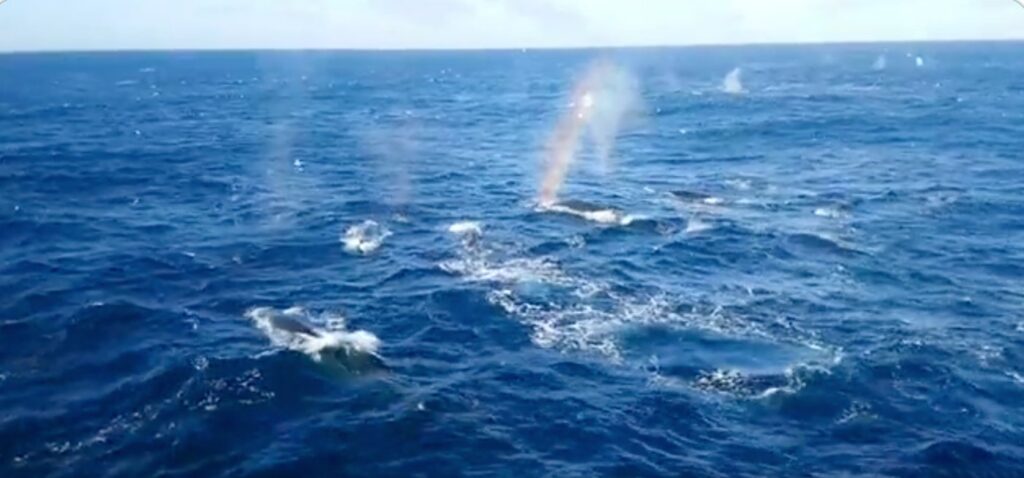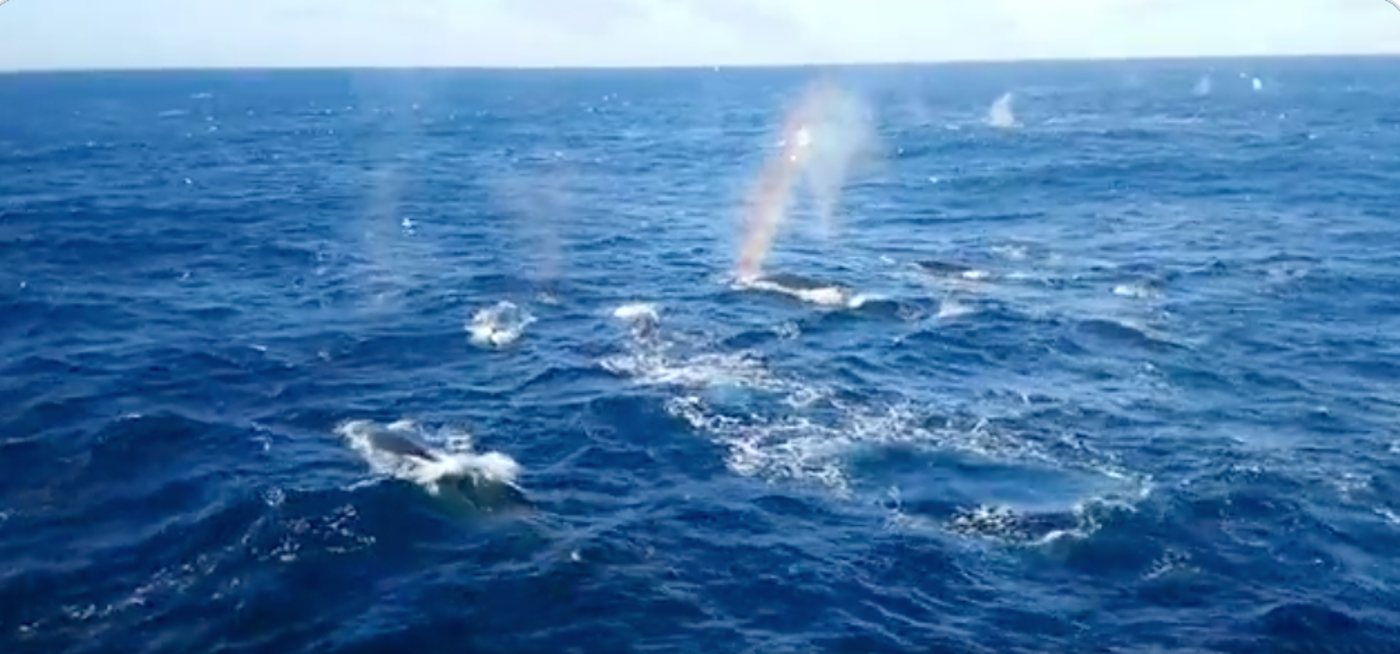
Sailors and scientists aboard four krill fishing boats and a research vessel were treated to the majestic sight of 1,000 fin whales congregating near Antarctica to feed.
Second only in size to the blue whale, fin whales were once one of the chief targets of whaling vessels—and were driven to near extinction by the practice; they haven’t been seen in these numbers for over a century.
It may be, estimates researcher Conor Ryan, the largest congregation of fin whales ever recorded, and the sea was so dense that day with the 81-foot (27-meter) long slender baleens, their breaching created what Phillip Hoare described as a “misty forest of spouts, as tall as pine trees.”
Ryan, a zoologist aboard the National Geographic Endurance, filmed the whales going about their business as the boat passed around 375 miles north of the Antarctic Peninsula, near the South Orkney Islands.
Hoare, a whale expert reporting for the Guardian, states that science has discovered fin whales can live 140 years, meaning they could only just now be recovering from the whaling industry of the 1800s, and that gatherings such as these could become a lot more commonplace.
RELATED: Incredible Video Shows a Husband and Wife’s Amazing Encounter With a Group of Humpback Whales
The winter months of Europe and North America are the summer months down in the Southern Ocean, which means as the sea ice recedes, the waters become flush with food for many species of whale.
MORE: A Real Moby Dick: Mythic White Sperm Whale Captured on Film Near Jamaica
It’s already known that humpbacks and blue whales also gather in the summer near Antarctica as part of their long global migrations.
The fin whale is currently classified as Vulnerable on the IUCN Red List, but also their populations worldwide are increasing, and could have passed 100,000 individuals.
(WATCH the whales in the video below.)
We found about 1000 fin whales over a 5x5 mile area off South Orkney. Blue and humpback also mixed in. Mind completely blown 🐳 @LindbladExp #NationalGeographicEndurance pic.twitter.com/xtdvexXwI5
— Conor Ryan (@whale_nerd) January 14, 2022
SHARE This Hopeful Story On Your Social Media Feeds…




















